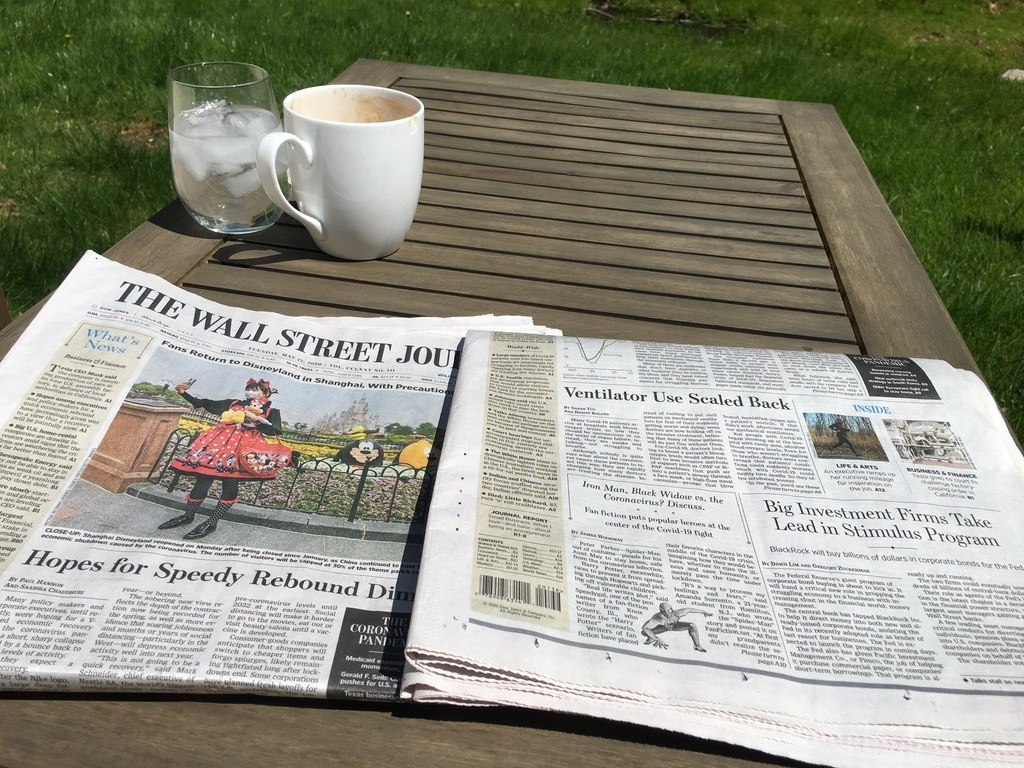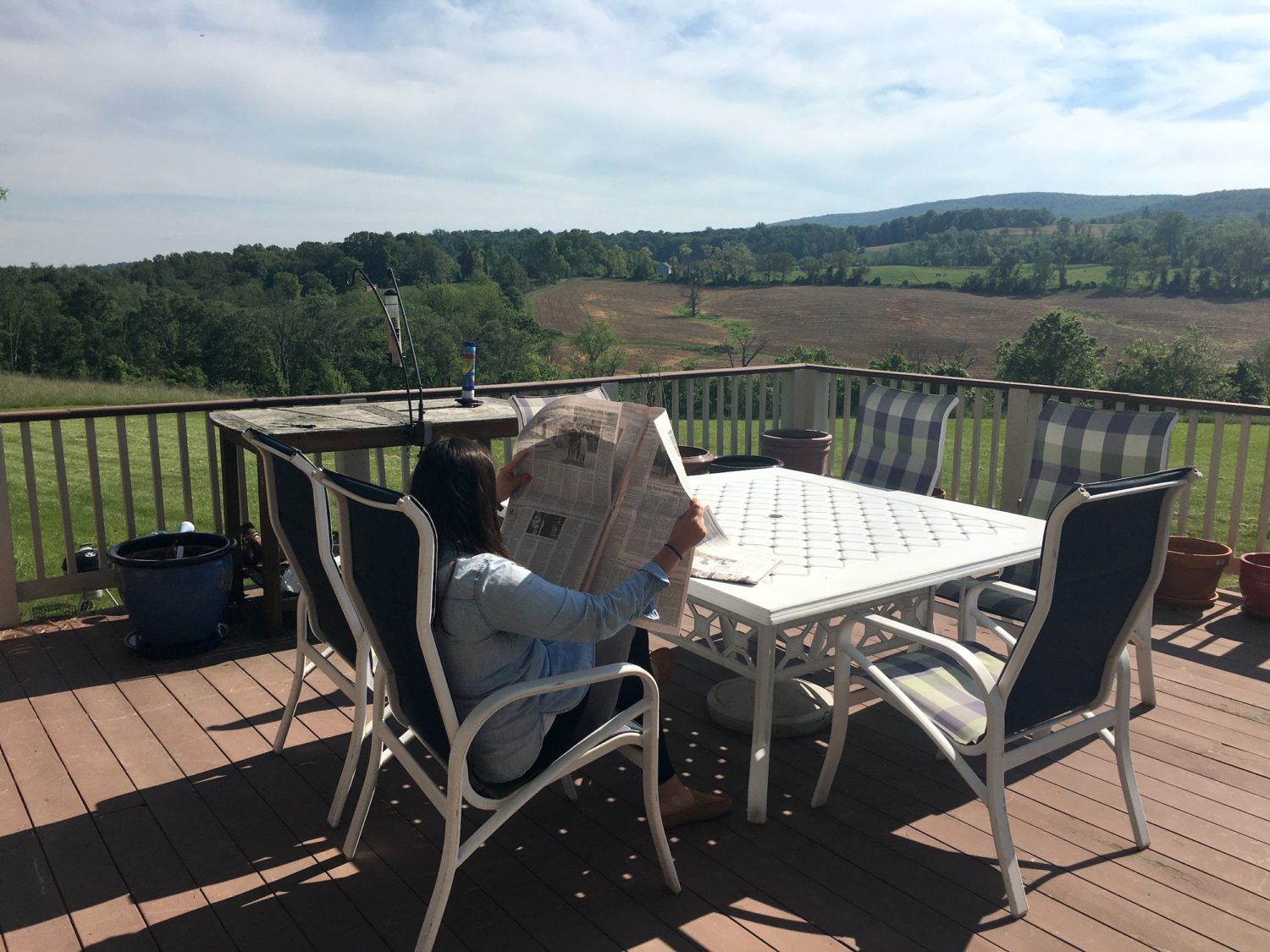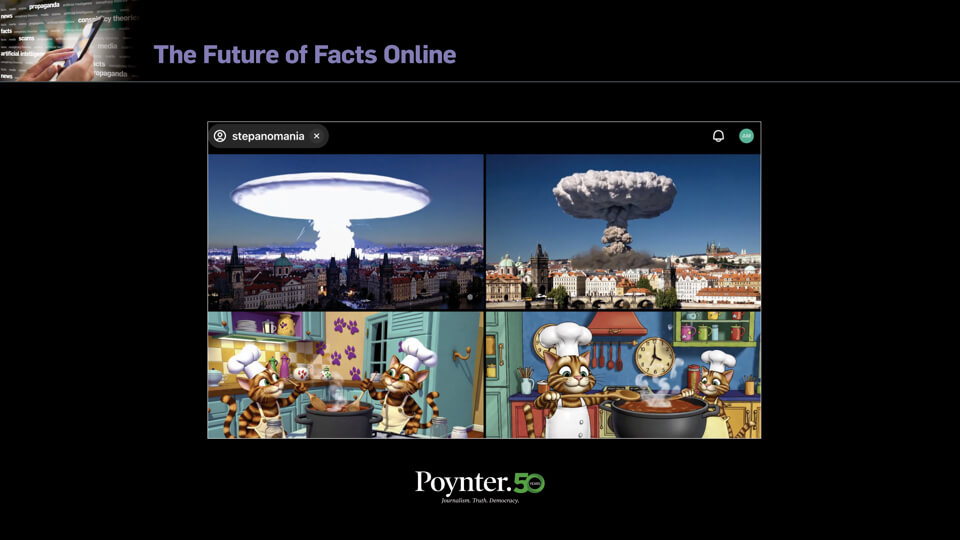For the first time in my life, I am a print newspaper subscriber. I’m 36 years old. And when I confirmed my home delivery subscription to The Wall Street Journal earlier this month, it felt … so damn good.
This is unusual for a couple of reasons. First, I am a third-generation journalist. My grandparents worked in radio and my dad wrote for various newspapers and print publications for over 40 years, including for Time magazine, Forbes magazine, The New York Observer, New York Magazine and many others. I grew up in a house full of print newspapers and magazines, including many bookshelves filled with dozens of saved back issues as well as multiple framed magazine and newspaper cover stories written by my dad, Christopher Byron (he passed away in 2017, may he rest in peace).
Second, I have read thousands of print newspapers. In my twenties, I was reading four to five newspapers every day working on various assignment desks at CNN in New York, Washington, D.C., and Atlanta, searching for stories that would make “good TV.”
Third, I love holding a newspaper. My earliest memories of holding and reading a newspaper were from when I was 18, riding the train from my parents’ house in Connecticut to New York City, commuting to my summer internship and reading the newspaper in the morning along with everyone else on Metro North in the tri-state area running the rat race to Wall Street. The black ink on my fingers felt like a badge of honor. Folding the pages smoothly, expertly, with some self-taught method and trying not to look awkward, felt like a rite of passage.
All these professionals glued to their electronic devices is just terrible…it was better in the old days?#WAS2018 pic.twitter.com/CqH9ClB9Wf
— mark elliott (@memarkelliottme) March 4, 2018
Maybe it was because journalism is in my blood — or maybe because it was a part of life of becoming an adult in the early 2000s. You read the newspaper every day, everyone did.
So what happened? Why didn’t I subscribe to a newspaper sooner? By the time I moved on from jobs that provided me with multiple newspapers to read every day as part of my work (I still have to pinch myself that I get paid to read the news, I love it that much) … online happened.
Over the years, I read more and more newspapers through their websites, and then skimmed more and more of their headlines on social media platforms like Twitter, Facebook and others. This behavior probably sounds familiar to many and so might this feeling — shame.
I have long felt ashamed for not subscribing to a print newspaper. Every excuse I have is bad. I could have afforded it long before now. I have lived at 10 different addresses in five different cities in 15 years, but I could have easily changed the delivery address each time. And fewer and fewer print newspapers were hanging around the newsrooms I was working in.
When I left the CNN New York bureau in 2007, there were at least six national and local newspapers delivered to the newsroom. Every newsgathering producer received copies of each on their desk every morning. From what I can recall, they included Newsday, The New York Times, The New York Post, The Daily News, The Wall Street Journal and The New York Sun. (The managing editor was the only one to get a copy of the Financial Times.)
When I came back to the New York bureau five years later, after stints in D.C. and Atlanta, I had risen to the title of producer and was excited to get my own personal stack of newspapers on my desk every morning. I was saddened to learn that the practice had stopped. We were all expected to read them online.
At CNBC by 2014, anchors and control room staff read the papers for programs I worked on like “Squawk Box,” but no other staff was offered the opportunity. And my last newsroom before Poynter was Snapchat — there were no newspapers there (or anywhere in the office) even though the New York office is located inside the original New York Times building.
So why did I subscribe now after all these years?
COVID-19.
Thankfully, my family is physically healthy and overall OK. But, like many Americans and people around the world, the amount of screentime my husband and I (and our son) have been exposed to since the pandemic began has been — troubling. Between work, being on lockdown at home, keeping our toddler occupied while my husband and I work full time, and consuming news for both work and personal reasons well past midnight for many, many, many nights … I hit a wall.
RELATED: Locally — Chronicling the power and perils of local journalism during the pandemic
I just couldn’t keep up with doing my job, being a good journalist, as well as a responsible wife, mother and daughter to a high-risk parent nearby, staying on top of the latest alerts and news from New York Gov. Andrew Cuomo with my family living in a coronavirus hotspot in Westchester County, New York. I had to find a way to cut back on my screentime and get the information that I needed to feel satiated, informed and on top of what was happening in the world.
Subscribing to the Journal was the best decision I have made through this entire pandemic.
When I hit that subscription confirmation button, it pretty much made my month, and when I went to bed, I slept like a rock after weeks of reading my phone in the dark, “doomscrolling” as some call it, late into the night. Maybe I was just exhausted from this persistent wave of anxiety many of us have been battling, or maybe I did something I’ve been wanting to do for about a decade.
And when the actual newspaper came … my spirits were lifted instantly. The feeling of walking to the end of the driveway to pick up my print newspaper every morning has brought me more joy than I can put into words. It’s like every morning is Christmas morning — the grown-up edition. This was one daily task or chore I volunteered to pick up in my house — because this was my thing. This was my newspaper. It might sound corny and I am clearly biased on this subject, but this change in my life that I was able to control has been a sincere silver lining to this living nightmare we are all living through, and I am always looking for silver linings these days.
That’s all well and good, but has it been worth the purchase? Yes.
Since subscribing to the print edition, I have significantly cut back on my screentime and felt better informed than I have been in, frankly, years. As someone who spends four to five hours per day on my phone and even more on screens constantly refreshing social media for work and personal reasons — and as someone who prides themself on following a variety of sources across platforms and makes a concerted effort to get outside of my echo chamber — this was a major surprise to me. It really showed me how much noise I am consuming every day and how much of my time online is wasted.
One important observation. The Journal is much, much thinner since the last time I held it in my hands. Everyone working in news knows that ad revenues for print newspapers have been shrinking for years even before the coronavirus hit (and accelerated because of the pandemic). I guess this shouldn’t have been a surprise, but it still was. It breaks my heart just how thin each edition is, and that first delivery made me wonder, sadly: How long will this print edition last?
(Note to the young folks: Back in the day, print newspapers sometimes were massively thick, brimming with advertisements. Especially the weekend editions, you could never read through all of those in a day.)
RELATED: The coronavirus has closed more than 30 local newsrooms across America. And counting.
I’m not going to go down the road of lamenting the demise of print newspapers, because as I said, I’m trying to focus on the positives right now because I’m a glass-half-full kind of journalist and person at heart. And I am hopeful that others like me who feel ODed on the internets will look for another way to get the news, and turn to print — national or local.
Could this be a moment in human behavioral change for newspapers to capitalize on? Absolutely, and I hope they do. Could I be wrong? Of course.
But one thing I do know is that I am so grateful for print newspapers and I hope they make a comeback.

Recent print editions of The Wall Street Journal that show Mickey Mouse and Spider-Man, which drew the interest of the author’s son (Katy Byron)
The other thing I know for sure is that the Journal made a pandering play for the affection of my toddler recently by putting stories that included photos or drawings of both Mickey Mouse and Spider-Man on the front page.
It’s worth noting that he also seems less bothered when I am not paying attention to him and reading the newspaper than when I am on my phone. I hope that continues.
But seriously, watching my 2.5-year-old, a fourth-generation journalist possibly, hold a newspaper in his hands brought tears to my eyes. It was a special moment I will never forget and may never have experienced without living through this pandemic.
So my advice to help you get through the months ahead: Think about trading in the next Netflix show, or replacing morning social scrolling with a subscription to the print edition of a newspaper. It’s the healthier thing to do and will make you feel good, and that’s something we all need right now.
Katy Byron is the editor and program manager of Poynter’s MediaWise, a nonprofit project teaching millions of Americans how to sort fact from fiction online. Reach her at kbyron@poynter.org.







